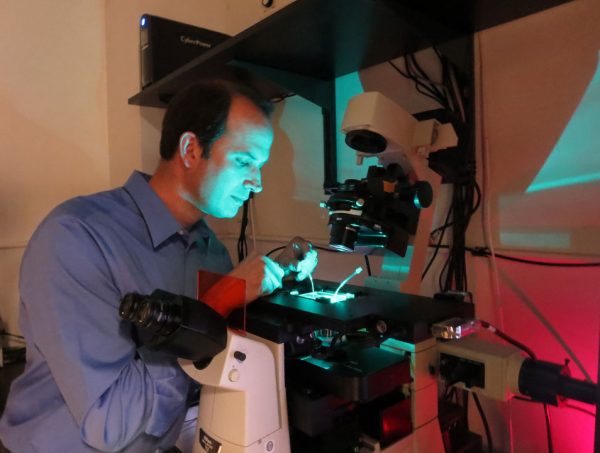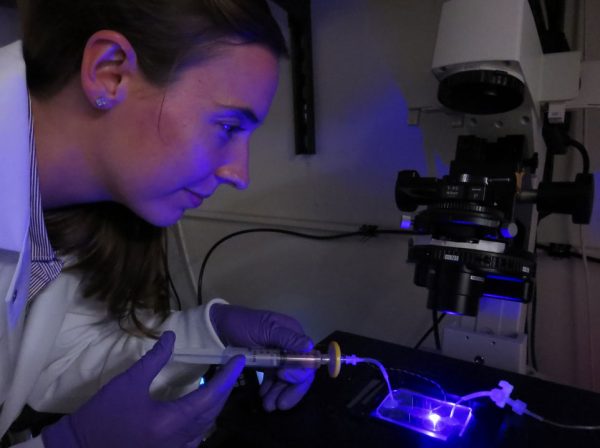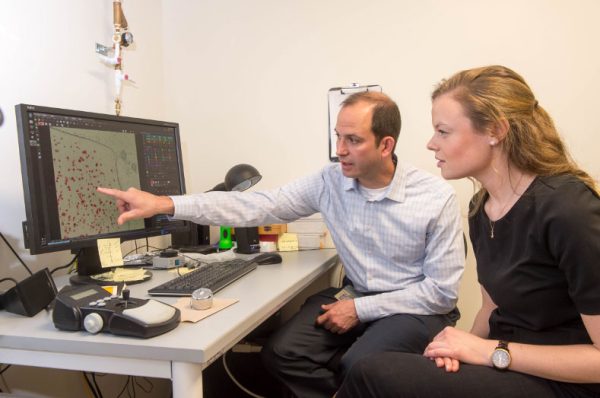Towards a Brighter Future: From Evolution to Revolution in Pediatric Dental Regeneration with Vital-Dent
“We are trying to do whatever is possible to save the tooth first.” This comment from a parent of a child with a traumatic dental injury is what drives the team to develop a therapy to revitalize pulp and maintain teeth in children.
 The hydrogel-based platform technology was originally explored for the regeneration of the bone growth plate over a decade ago in 2012. After exploring various applications for this technology, the team led by Drs. Juan Taboas and Herb Ray at the University of Pittsburgh (Pitt), is now advancing the biomaterial-based therapy to regenerate dental pulp, focusing on the pediatric population.
The hydrogel-based platform technology was originally explored for the regeneration of the bone growth plate over a decade ago in 2012. After exploring various applications for this technology, the team led by Drs. Juan Taboas and Herb Ray at the University of Pittsburgh (Pitt), is now advancing the biomaterial-based therapy to regenerate dental pulp, focusing on the pediatric population.
The current project team formally came together in 2017, through a student initiative for an i-Corps program at Pitt. Over the years, more than 12 individuals have worked on the project, advancing it at each step along the way. The project entered the ITP program in 2019, under the leadership of Dr. Taboas, an Associate Professor in the Department of Oral and Craniofacial Sciences and a biomedical scientist with a broad background in bioengineering, and Dr. Ray, former chair of the Department of Endodontics, a highly respected endodontist.
Since its entry in the program, the MPWRM Resource Center (RC) has supported the project with the aim of advancing the product to clinicals and enhancing clinical adoption. In collaboration with the Market Assessment Core, the team has conducted several rounds of in-depth interviews with endodontists to test and hone the value proposition of this biomaterial-approach, they call Vital-Dent. Through these conversations, the team came to appreciate that regenerative endodontics is still nascent relative to other dental specialties where regenerative approaches have been integrated into clinical practice, and decided to focus Vital-Dent’s initial activities on high value indications for the pediatric population. In this subset of the patient population, the current approach is often to stabilize the tooth until more definitive treatment can be performed when the child stops growing. As a result, the whole tooth is not revitalized after pulp removal, leading to tooth discoloration, loss of tooth structure, and limited (if any) tooth growth. With Vital-Dent’s ability to promote pulp revitalization and dentin regeneration, the goal is to attain long-term survival of the natural tooth structure.
 The formulation of Vital-Dent has also evolved during its development in the ITP program. With input from the RC experts, the composition has gone through multiple iterations to be able to take advantage of a streamlined pathway for FDA submission. In collaboration with the Regulatory Core, the team is working on design control processes for the development of Vital-Dent, and the MPWRM Resource Center’s Quality Assurance Core conducted a visit with the investigators’ laboratory at Pitt. Together, the team developed a regulatory strategy that anticipates a 510(k) pathway, and roadmap for the submission including studies and partners with whom those studies will be conducted.
The formulation of Vital-Dent has also evolved during its development in the ITP program. With input from the RC experts, the composition has gone through multiple iterations to be able to take advantage of a streamlined pathway for FDA submission. In collaboration with the Regulatory Core, the team is working on design control processes for the development of Vital-Dent, and the MPWRM Resource Center’s Quality Assurance Core conducted a visit with the investigators’ laboratory at Pitt. Together, the team developed a regulatory strategy that anticipates a 510(k) pathway, and roadmap for the submission including studies and partners with whom those studies will be conducted.
The support from and discussions with the Regulatory Core have been critical in defining the mechanism of action, key development steps, and responses to our interested investors.
 The team has also leveraged various resources at its home institution. Prior to its engagement with the ITP program, the project was supported by the i-Corps program at Pitt, which enabled them to complete an initial customer discovery to explore dental applications of Vital-Dent. Subsequently, pilot studies were also supported by a program within Pitt, which became the basis of the application to the ITP program. Through the ITP program, the RC’s Commercialization Core has also been an integral part of the team in its continued advancement on the business front. Working together with the Commercialization Core, the team worked with the home institution to refine its intellectual property strategy. The Core has also supported the team’s engagement with external parties interested in this technology. In addition, with combined support from the Market Assessment Core, the RC has helped the project team prepare a presentation to Renaissance Health Service Corporation that culminated in a $100,000 research grant for the project.
The team has also leveraged various resources at its home institution. Prior to its engagement with the ITP program, the project was supported by the i-Corps program at Pitt, which enabled them to complete an initial customer discovery to explore dental applications of Vital-Dent. Subsequently, pilot studies were also supported by a program within Pitt, which became the basis of the application to the ITP program. Through the ITP program, the RC’s Commercialization Core has also been an integral part of the team in its continued advancement on the business front. Working together with the Commercialization Core, the team worked with the home institution to refine its intellectual property strategy. The Core has also supported the team’s engagement with external parties interested in this technology. In addition, with combined support from the Market Assessment Core, the RC has helped the project team prepare a presentation to Renaissance Health Service Corporation that culminated in a $100,000 research grant for the project.
With the roadmap as its guiding light, the Vital-Dent team is striving to create regenerative therapies for children, because they are underserved in tissue engineering and regenerative medicine, with the ultimate goal to save their teeth after traumatic injury and pulpitis.
For any questions/interests in the projects, please contact us at
translationalrc@umich.edu
